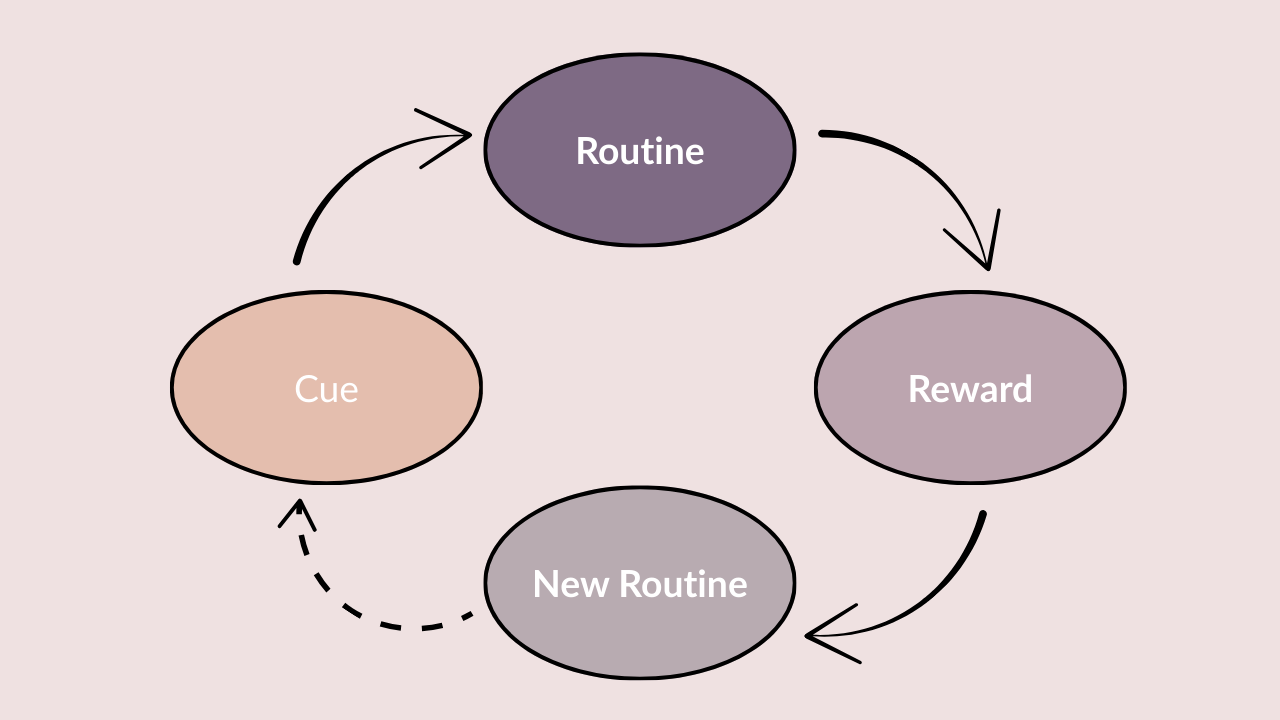Rewiring Habits for Sustainable Recovery
When it comes to recovery, many people start out with determination and willpower. But after a few weeks or months, old patterns creep back in. Why does this happen? And more importantly, how can habits be rewired so recovery lasts?
The truth is, recovery isn’t only about resisting temptation — it’s about reshaping the automatic behaviors that guide daily life. Habits can be powerful allies in sobriety when they’re consciously rebuilt.
The Science of Habits
Habits aren’t just routines. They’re neurological loops. Charles Duhigg, in his bestselling book The Power of Habit (2012), describes habits as a cycle of cue → routine → reward. A cue triggers the behavior, the routine is the action, and the reward is the payoff — often a burst of dopamine, a sense of relief, or a feeling of control.
Neuroscience research confirms that habits live deep in the brain’s basal ganglia, where repeated behaviors are stored as automatic patterns (Graybiel & Smith, 2014). This is why breaking habits feels so difficult — the brain has literally carved a well-worn path.
The good news? Thanks to neuroplasticity, the brain can form new pathways. Studies on habit formation in the real world show that with consistency, new habits can become automatic in as little as 66 days (Lally et al., 2010).
Diagram of the habit loop — cue → routine → reward
Why Habits Matter in Recovery
In addiction recovery, habits often work against us. The cue of stress after work might trigger the routine of pouring a drink, with the reward being temporary relief. Over time, this loop becomes automatic.
One of my clients experienced this exact pattern. Every evening, stress was the cue, drinking was the routine, and numbing out was the reward. When he learned to identify the loop, he began replacing the routine with a walk and journaling. The reward was still stress relief — but in a way that aligned with his health and identity. Within weeks, he felt more confident, reporting, “I’m the kind of person who deals with stress in healthy ways.”
Another client shared that the values-based lesson inside the Empowered Recovery Curriculum gave him more insight than 20 years of AA meetings. This highlights how powerful it is to not just remove a behavior, but to align habits with values and identity.
Substitution in Action: From Drinking to Journaling
Rewiring Habits: Practical Steps
The first step in rewiring habits is awareness. Ask yourself:
What’s the cue? Is it a time of day, an emotion, or a certain place?
What’s the reward? Stress relief, distraction, comfort, or social connection?
What new routine could give me the same reward — while aligning with my values?
This is called habit substitution, and it’s one of the most evidence-based approaches to changing behavior (Lally et al., 2010).
The Role of Identity in Habit Change
Habits stick when they’re connected to identity. James Clear, in Atomic Habits (2018), emphasizes that the most powerful shifts happen when we stop saying, “I’m trying to quit,” and start saying, “I’m the kind of person who…”
From a brain perspective, every time you act in alignment with your chosen identity, you strengthen the prefrontal cortex, the region responsible for long-term decision-making and self-regulation (Heatherton, 2011). Over time, your brain literally makes it easier to choose the healthy habit because the pathway is reinforced.
Practical Pathways to Begin
This is where structured programs help.
The 21-Day Breaking Free Challenge — now just $27 for a one-year subscription — is designed to help you experiment with new habits in bite-sized steps.
The 28-Day Clean Body Reboot removes physical triggers like sugar and alcohol, while building routines that align with health and energy.
The Empowered Recovery Course is where identity, values, and habits come together to create sustainable transformation.
For treatment providers, the Empowered Recovery Curriculum equips facilitators with group scripts, worksheets, and exercises that bring this habit work to clients.
Your Journey to Sustainable Recovery
Anchoring Sustainable Recovery
Habits are not destiny. They’re patterns — and what’s learned can be unlearned. With awareness, neuroscience, and intentional alignment, habits can be rewired to serve recovery instead of sabotage it.
Each aligned choice is more than a behavior. It’s a vote for the person you’re becoming. And as those choices stack up, the brain rewires to make sobriety not just possible, but sustainable.
🎧 Podcast: Rewiring Habits for Sustainable Recovery
Learn how to identify your triggers, interrupt old patterns, and replace them with actions that align with who you’re becoming. This episode breaks down the neuroscience of habit change and the simple daily shifts that make recovery sustainable.
📚 References
Duhigg, C. (2012). The Power of Habit: Why We Do What We Do in Life and Business. Random House.
Graybiel, A. M., & Smith, K. S. (2014). Habits: plasticity, learning, and neurobiology. Nature Reviews Neuroscience, 15(9), 592–600. https://doi.org/10.1038/nrn3810
Lally, P., Van Jaarsveld, C. H., Potts, H. W., & Wardle, J. (2010). How are habits formed: Modelling habit formation in the real world. European Journal of Social Psychology, 40(6), 998–1009. https://doi.org/10.1002/ejsp.674
Clear, J. (2018). Atomic Habits. Avery. https://jamesclear.com/atomic-habits
Heatherton, T. F. (2011). Neuroscience of self and self-regulation. Annual Review of Psychology, 62, 363–390.https://doi.org/10.1146/annurev.psych.121208.131616
👉 For individuals: start experimenting with new habits in the 21-Day Breaking Free Challenge, reset your health with the 28-Day Clean Body Reboot, or sustain your transformation through the Empowered Recovery Course.
👉 For practitioners and treatment centers: explore the Empowered Recovery Curriculum to bring habit-rewiring tools directly to your clients.





